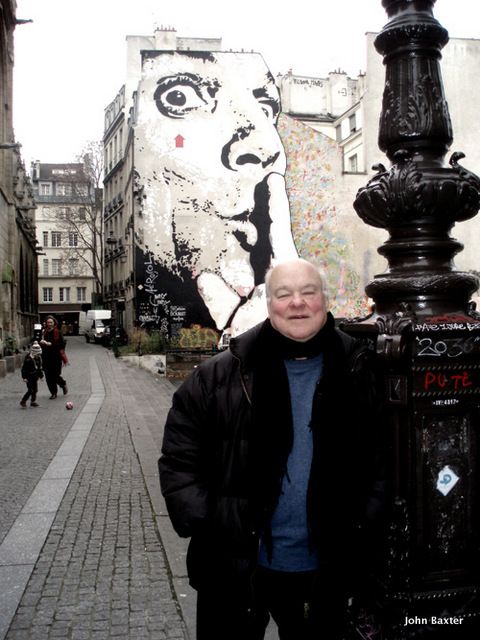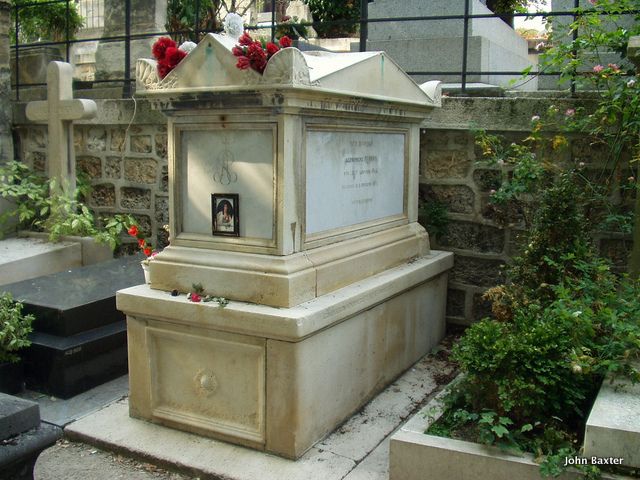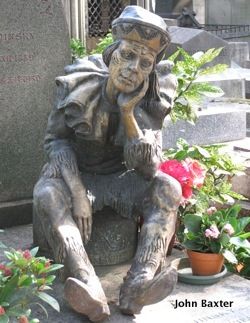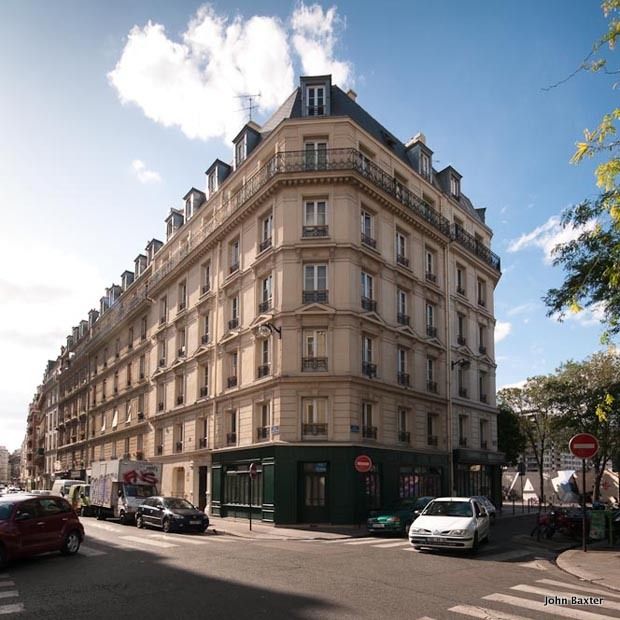Last-Minute NYC Holiday Gift Guide 🎁
We’ve created a holiday gift guide with presents for the intrepid New Yorker that should arrive just in time—


Baxter is a bibliophile (the first of his memoirs written in Paris was A Pound of Paper: Confessions of a Book Addict) and a serious movie buff. He’s authored several biographies of famed film luminaries including Federico Fellini, Woody Allen, Stanley Kubrick, and Robert De Niro, just to name a few.
Baxter’s latest work is The Most Beautiful Walk in the World: A Pedestrian in Paris. Composed of 37 chapters, each elegantly linked to the next, the book is a delightful stroll through the city, its history, and the author’s own observations about his adopted home.
I was particularly fond of Baxter’s seamless weaving of personal anecdotes with fascinating facts, a fluid prose that makes it one of the most pleasurable Paris books I’ve read in a long time. His love of the city comes through, as well as his wit and intelligence. A vignette might evoke Paris’ classic beauty (Luxembourg Gardens, for example), but is just as likely to veer into lesser-known terrain (mass murderer Henri Désiré Landru who often met his victims in those very same gardens!) Hemingway haunts, opium dens, “political walks” (manifs) — Baxter covers wide ground. His asides were also great. (“Not great laughers, the French”¦Interestingly, there’s no French equivalent of the phrase ‘bedside manner.’”)
We like the quirky and offbeat around here so I asked John Baxter if he’d be willing to write about one of his strolls off the beaten path. Happily he agreed! He also provided the photos. Enjoy!
* * * * * * * * * * * * * * * * * * * * * * * * * * * * * * * * * * * * * * * * * * * * * * * * * * * * * * * * * * *

Plastered on the haunch of the butte of Montmartre, the 18th arrondissement is off the beaten track, with an architecture and lifestyle all its own. Along rue Marcadet, diamond-shaped lots from the days when these were market gardens or guinguettes have dictated apartment blocks with parallelogram floor plans. What does it do to your brain, to live in a room with no right angles? Maybe it accounts for the pale faces that stare out from a few windows; shut-ins, with nothing to do but watch the world go by.
Caught in the gaps between these crooked habitations, like bits of gristle in a set of crooked teeth, businesses survive that you seldom see in more prosperous districts; plumbing supply shops, shoe repairers, furniture movers, moulders of false teeth.
And probably undertakers too, along with makers of funerary monuments. The Montmartrois joke that once you visit the dixhuitieme, you stay forever — because it’s the arrondissement with the largest number of graveyards.
The Cimetière de Montmartre is certainly a tourist magnet. Some visitors come to lay flowers on the tomb of a relative, but most make the pilgrimage to view celebrity graves like those of Vaclac Nijinsky, with its statue, commissioned by the choreographer Serge Lifar, of the dancer dressed for his puppet role in Petrushka ; of Adolphe Sax, inventor of the saxophone, the only tomb in the world decorated with a facsimile of that instrument; and the resting place of Marie Duplessis, the original Lady of the Camellias, inspiration of Dumas fils’ Camille and of Violetta in La Traviata. After she expired, young and destitute, a lover paid to have her buried in a sheltered spot in the lee of low wall. The sun falls lightly on her sandstone crypt, which is often decorated with fresh camellias.

Like a gated community of the prosperous departed, the cemetery has only one entrance, and that on the uphill side, tucked out of sight under a viaduct on busy rue Caulaincourt. (There is a second gate but, with typical French quirkiness, it’s open only one day of the year — Toussaint: All Saints Day.) Next to the main entrance on quiet rue Rachel is a modern residential block, part of a chain of self-catered holiday apartments, though one has to wonder who would choose to spend a visit to Paris in such a dismal location.
Most days, the gate admits a flow of exasperated tourists and mourners who, having got off the bus at the downhill end, have been forced to trudge around the entire circumference of the cemetery to get in. Because of this, nearby streets are well supplied with bars in which parched visitors can enjoy a reviving beer.
Mine au Poivre on rue Montcalm is just such a place: a shady retreat to escape from the heat and catch one’s breath. But there are plenty more like it, and I might have walked right by but for the music drifting out its door — an old Tina Turner number, but sung in French. Glancing in, I glimpsed a large painted board above the door to the kitchen. It announced “Vérigood”.

On a whim, I went in and sat down. The music tape segued from Nutbush City Limits to the Flower Duet from Lakme. Odd.
A few minutes later, the waiter materialised at my elbow. “Je vous ecoute”.
I nodded towards the sign. “Pourquoi ‘Vérigood’?”
“Because is very good.”
“What is?”
“Boeuf bourguignon. Best in Paris. Fifteen hours cooking.”
The music tape switched to a wailing tenor, singing in Arabic.
“OK. And a pichet of bourgogne.” I knew without asking that it would be, consistent with the tradition of boeuf bourguignon, the same wine as used in cooking the dish.
Tiny establishments like this make me feel I’ve stepped into a film from the 1940s; one of those dramas about a middle-aged train driver or cinema projectionist, driven to murder by his love for a randy and restless woman: Manon Lescaut meets La Bete Humaine.
Who was the killer? Probably the middle-aged man sitting in silence at one of the tables on the sidewalk. And his victim? Obviously the woman opposite. Their marriage was flat as the half-drunk glasses of Stella Artois on the table between them.
At the bar, a man in a baggy suit paged through Liberation. He would be the jaded cop who solves the case, a soixante-huitard plodding through his last months before retirement, but not so dulled that he doesn’t recognize homicide when he sees it. Two stools along, a thin woman with a mass of black frizzy hair drank a Pernod and offered her bony profile to be admired. Too old to play the femme fatale , she could be the malicious neighbour, forced by a shady past to inform on the killer…
“Bon appetit.”

The waiter plonked down a deep dish, with a basket of bread.
I’d expected the usual stringy meat swimming in watery gravy with boiled potatoes and carrots. Instead, the beef arrived in a dark heap, barely moist, piled on a bed of puree. I tasted the puree first, an infallible test of authenticity, and found, with pleasure, those few scattered lumps of unmashed potato that signify the home-made variety. As for the meat, it fell apart under the fork, tender and succulent. Fifteen hours of cooking hadn’t been wasted.
In a word, verigood.
And very dixhuitieme.
For more offbeat strolls through Paris, pick up a copy of John Baxter’s The Most Beautiful Walk in the World. Check out his Facebook page to learn how to join one of his literary walks yourself.
Sion Dayson is an American writer living in Paris. Her nonfiction has appeared in The Utne Reader, The Wall Street Journal, Girls’ Guide to Paris and her fiction in Smokelong Quarterly and the anthology Strangers in Paris, among other venues. She holds an MFA from Vermont College and is currently seeking publication of her first novel. She blogs about the City of Light’s quirkier side at paris (im)perfect.
Subscribe to our newsletter